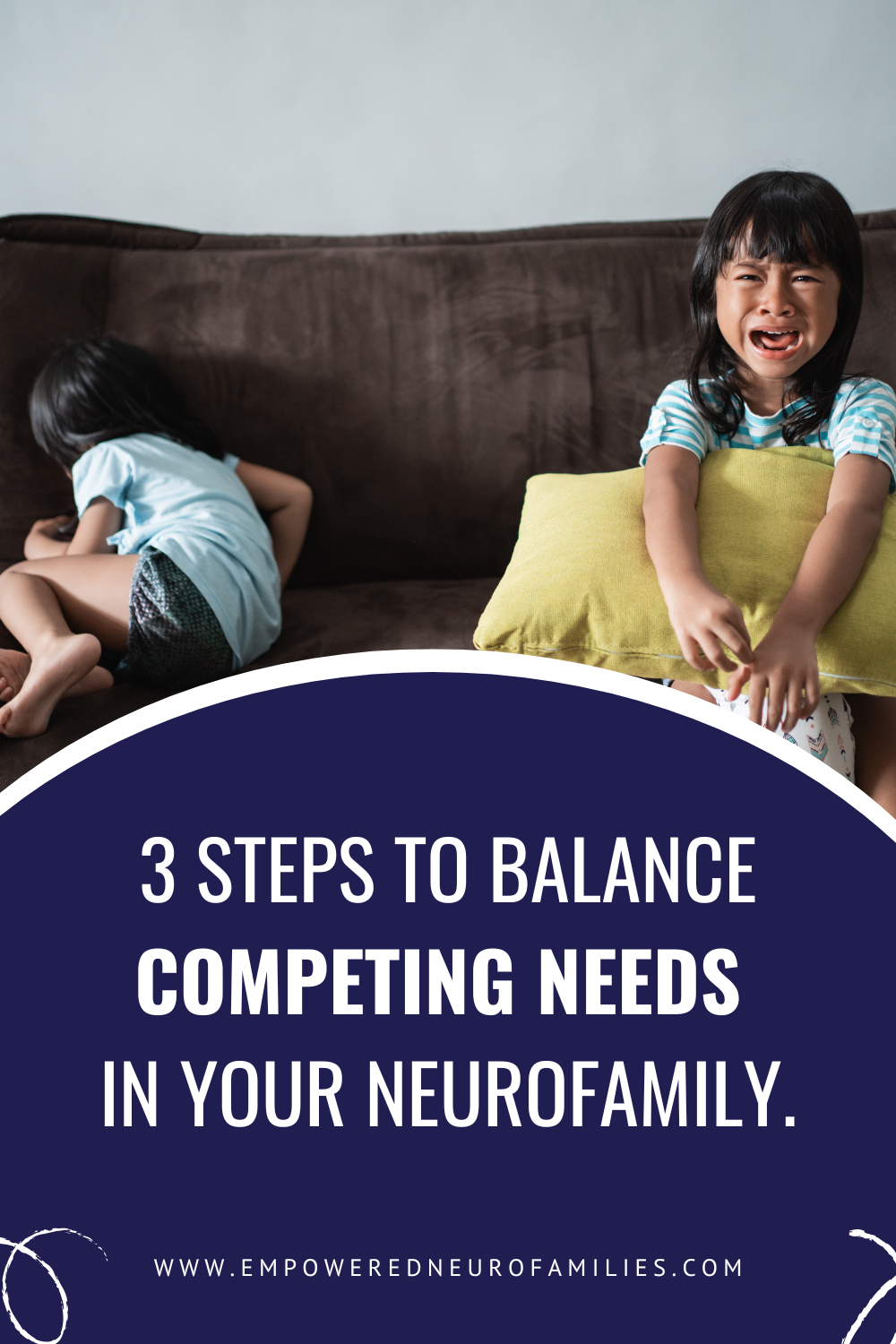3 Steps to Balance Competing Needs in Your Neurofamily
Tired of the constant conflict in your neurofamily?
Especially when it feels like everyone needs something completely different, sometimes those needs are impossible to meet at the same time, and everyone needs whatever it is right now?
Yeah, I've been there.
So over the next five minutes, I'm going to walk you through exactly how to create a plan for when there are competing needs in your neuro family.
like when one person needs quiet while the other loudly stims,
or one person needs physical touch but the other is completely touched out,
or one person is hyperactive and the other is overstimulated.
And just to make this so much easier for you to implement, I created a really simple guide for you that helps you implement this strategy, starting today.
You can do it in like five minutes, and it even includes my own loud noises plan that we use in my home, because I am super sensitive to loud noise and I have chronic migraines, but my son loves to loudly script and stim.
So if you want that guide, drop me a line below. I'll send it over to you in Messenger.
(Prefer video? Watch the video-version of this post above.)
But if we haven't met already, Hey, friend Kaylene here.
I'm a multiply disabled mom of six neurodivergent kids, and I empower parents of neurodivergent kids to become the architect of their neurofamily so that they can build their neurofamily by design instead of by default.
Now, in the next five minutes, I'm going to walk you through the exact steps that I use with my clients.
I did one of these calls today.
These are the exact steps I use to create your own competing needs plan that's unique to your neurofamily.
Pssst: Want me to create a custom competing needs plan for you? Click here!
Identify Competing Needs
So step one is identifying the competing needs.
We want to get really clear on who the people are that are involved and what their specific needs are.
We want to be as specific as humanly possible.
So instead of saying they want to control the game, maybe it's they want to dictate what her sister says with her doll during the game.
Or instead of they get hyper, maybe it's they need to bounce up and down.
So we want to get really, really detailed and specific about what each person needs in this scenario.
Get Clear On Details
Then step two, we want to get clear on the details.
Who needs to be in this specific location?
Who is more regulated on a day-to-day basis or in this scenario?
Who is attached to a specific item or object?
Any details you can add about the scenario where this happens, the better.
Create Your Level-One Competing Needs Plan
And then, step three, create your level one competing needs plan.
So in order to avoid overwhelm, we're going to focus here on a solo accommodation plan.
These are plans that each person involved in this competing needs scenario can do themselves without any participation from anyone else.
So even if your child who loudly stims refuses to or can't work with your other kids to make a plan together, your kid who needs quiet can follow their plan to get the accommodations they need.
That way it is independent of each person being able to cooperate with the other.
Here's how it works:
For each person involved in the situation where their needs compete with someone else's, you're going to help them to feel empowered to get what they need on their own.
For example, if it's too loud and they need quiet,
They could leave the area and go somewhere quieter.
They could put in noise-canceling headphones.
They could put in noise-reducing earplugs (vibes are my favorite if you are curious).
They could play music because that's noise that they control instead of noise they can't.
These are all things that one person can control, even if the other person doesn't change their volume at all.
Now remember, this is just your level-one competing needs plan.
This uses Solo Accommodations only.
Eventually, you'll want to add in Assisted-Accommodation Plans and even Partnered-Accommodation Plans, but those are quite a bit more nuanced.
They take a lot more practice and a lot more than I could share with you in five minutes.
So for now I want you to focus on empowering each member of your neuro family with Solo Accommodation Plans so that everyone knows exactly what they can do when competing needs start to get too overwhelming.
And don't forget—To make this easier for you to implement, I created a simple guide for you that will help you implement this strategy and create those solo Accommodation Plans starting right this second.
It takes less than five minutes, and it even includes an example of my own personal loud noises plan that we use in my home okay with my noise sensitivity and my chronic migraines and my autistic son’s need to be very loud with his scripting and his stims.
So if you want that guide that has my example in it, but also walks you step by step through creating your own competing needs plan, click here to DM me on Facebook or click here to DM me on IG and I’ll send it to you over messenger!



